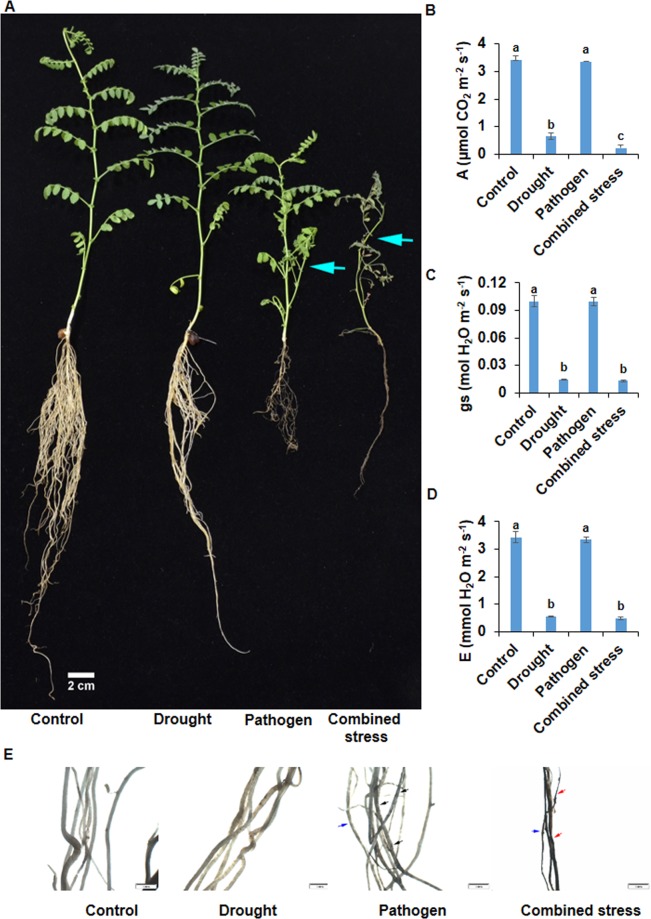Figure 2.
The morpho-physiological response of plants subjected to combined drought and R. bataticola infection. Drought, pathogen (R. bataticola) infection, and combined drought and pathogen infection were imposed on chickpea genotype JG 62. Chickpea plants for pathogen and combined stress treatments were grown in a sick pot containing R. bataticola inoculum. Plants for drought treatment and control were grown in autoclaved un-inoculated soilrite. Water with-holding for drought stress was initiated from fifth day post germination of chickpea. The desired drought (35% FC) level reached on the sixteenth day after water with-holding for both drought and combined stress treatments. Control and pathogen treatment plants were maintained at 90% FC for the entire experimental period. The drought was maintained at 35% FC for further five days, and disease symptoms at a morphological level were examined on the fifth-day. Symptoms such as leaf drying (cyan arrow), shedding of lateral roots, and root rot were observed in pathogen and combined stress-treated plants (A). Roots of control, drought, pathogen, and combined stress treatment plants were collected, and necrosis (black arrow), root rot (red arrow) and root diameter (blue arrow) was observed under the 0.5 XPF objective of SZX16 Stereo Microscope (E). Scale bar represents 1 mm. Leaf gas exchange parameters such as photosynthetic rate (B), stomatal conductance (C) and transpiration rate (D) were measured in forth leaf from the top for all the plants under four treatments. Bar graph represents the average of three biological replicates ± SEM. Statistical significance was tested by two-way ANOVA followed by LSD All-Pairwise Comparisons post-hoc test. The different letters above each column represent significance difference between means at p < 0.05.

